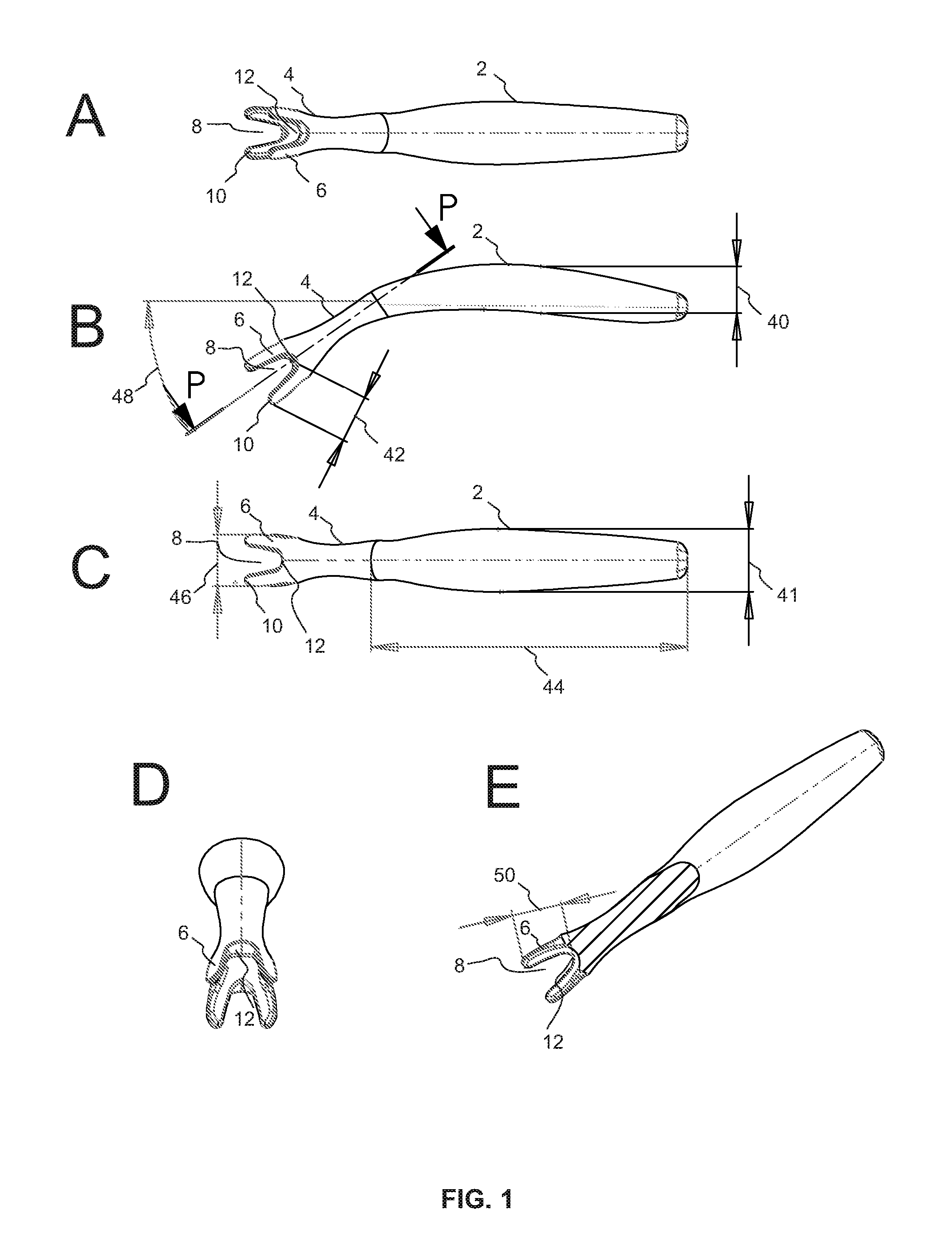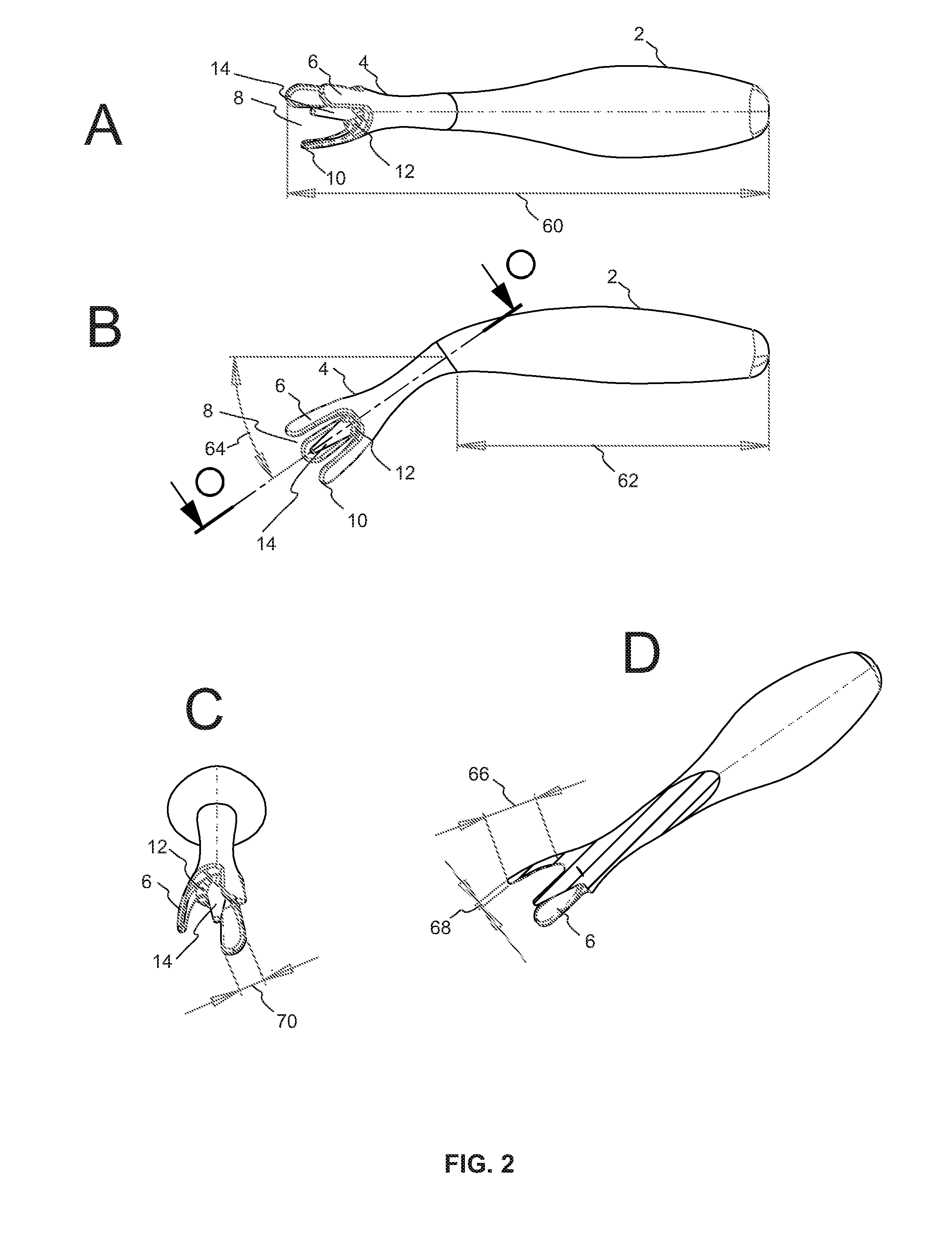Eating utensil
a technology for eating utensils and spoons, which is applied in the field of eating utensils, can solve the problems of children losing interest in food, difficulty in adequately spearing and retaining food on the fork, and difficulty in ensuring the safety of children's food, so as to facilitate children's use of utensils, facilitate use, and comfortably fit into the buccal cavity
- Summary
- Abstract
- Description
- Claims
- Application Information
AI Technical Summary
Benefits of technology
Problems solved by technology
Method used
Image
Examples
Embodiment Construction
[0044]Reference is now made to FIG. 1A which shows an inferior view of a utensil having a handle 2, a neck region 4, and four members 6. The members 6 define an area capable of retaining food 8. A lateral view of the utensil is shown in FIG. 1B showing a curvature defining an angle (as taken by reference to the axis of the head and the axis of the handle). A superior view is shown in FIG. 1C. Dimensions and angles as numbered are as follows 40, 10.6 mm; 41, 14.2 mm; 42, 10.7 mm, 48, 35 degrees; 44, 71.4 mm; 46, 11.7 mm.
[0045]In use, the utensil is held at the handle 2, with the members 6 being pushed at or into a food mass (not shown) such that the entire food mass (or at least a portion thereof) is caused to enter the region 8. It will be noted that all four members 6 are splayed slightly outwardly such that the region 8 is broader at the terminus of the members 10 and narrower at the base 12. By this arrangement food is pushed into the more narrow part of the region 8 thereby incr...
PUM
 Login to View More
Login to View More Abstract
Description
Claims
Application Information
 Login to View More
Login to View More - R&D
- Intellectual Property
- Life Sciences
- Materials
- Tech Scout
- Unparalleled Data Quality
- Higher Quality Content
- 60% Fewer Hallucinations
Browse by: Latest US Patents, China's latest patents, Technical Efficacy Thesaurus, Application Domain, Technology Topic, Popular Technical Reports.
© 2025 PatSnap. All rights reserved.Legal|Privacy policy|Modern Slavery Act Transparency Statement|Sitemap|About US| Contact US: help@patsnap.com



